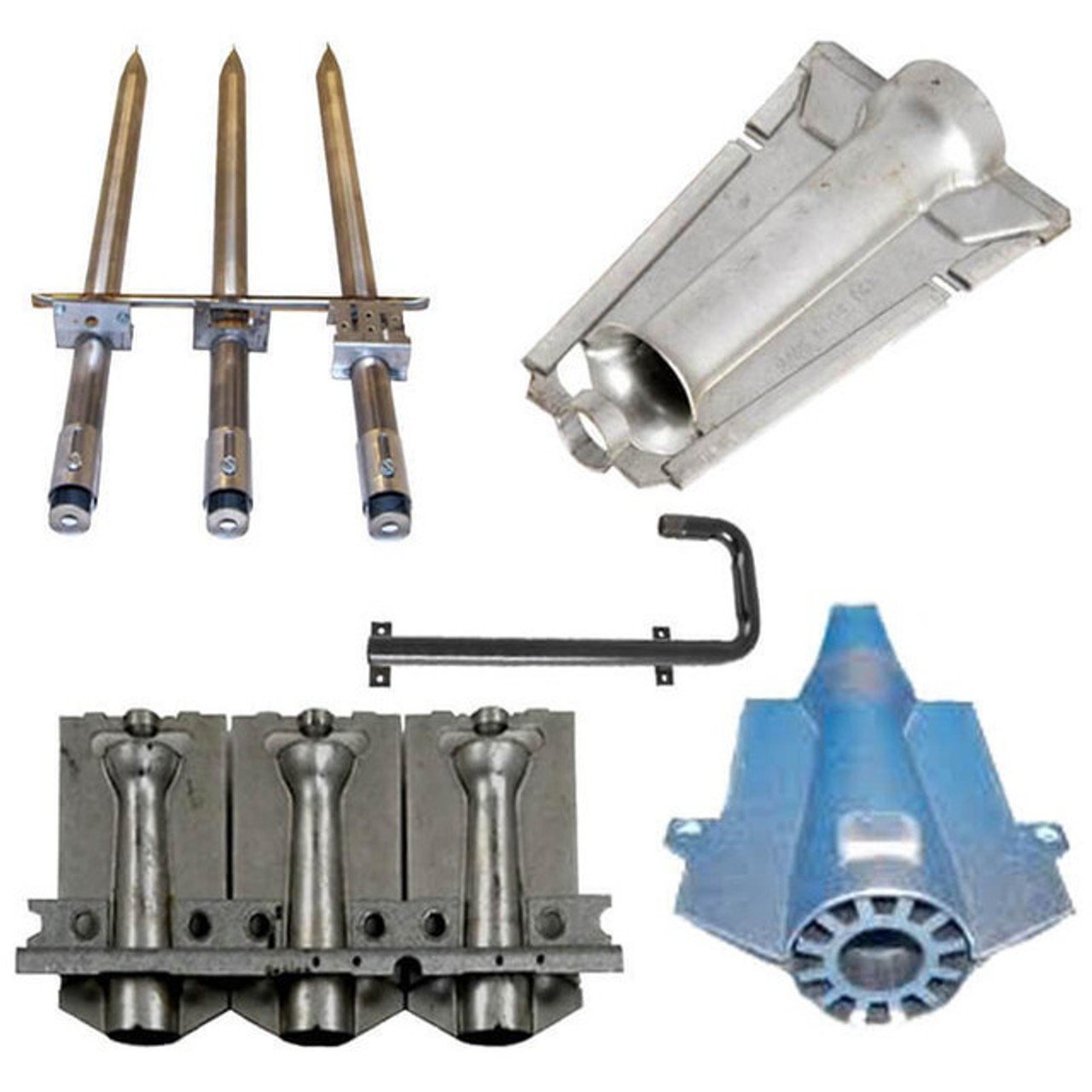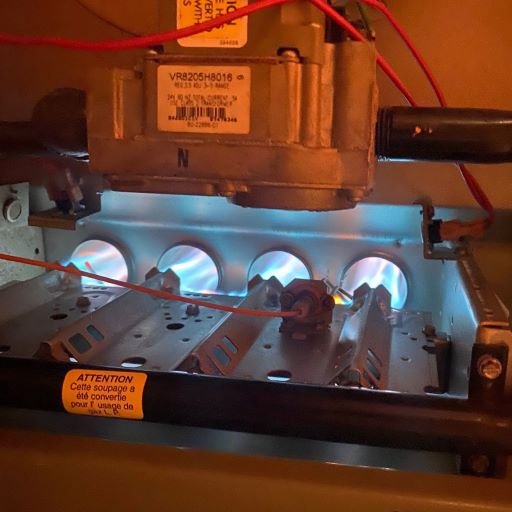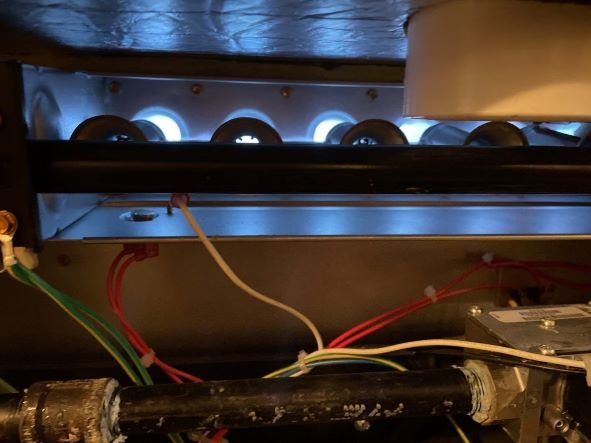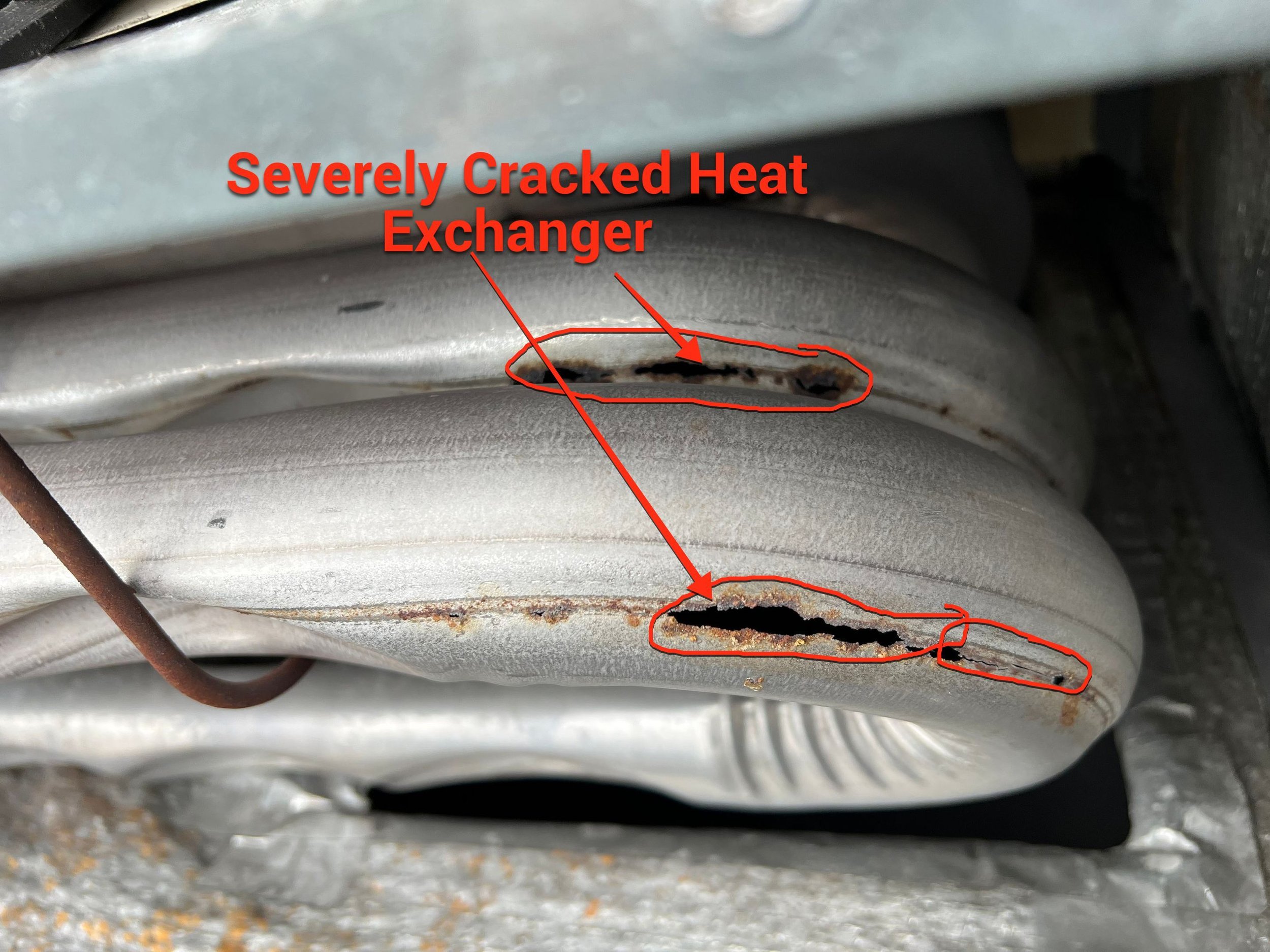How to Clean a Gas Furnace Burner: Best Practices for Efficient Heating
Wondering how to clean a gas furnace burner? This guide will show you the step-by-step process to ensure your furnace operates safely and efficiently. You’ll learn essential safety precautions, gather necessary tools, and walk through the detailed cleaning steps.
Key Takeaways
Always prioritize safety by turning off the power and gas supply before starting the cleaning process, and use proper protective gear.
Regular cleaning of the gas furnace burners is essential for efficient heating, reducing energy consumption, and minimizing the risk of incomplete combustion.
Conduct routine maintenance, such as changing filters and scheduling professional inspections, to ensure the longevity and efficiency of your gas furnace.
Quick Links:
Safety Precautions
Safety comes first when cleaning your furnace. Start by turning off the power and gas supply to prevent accidental ignition and electrical hazards. Locate the main gas valve and turn it to the closed position. Disconnect all electrical power sources to eliminate the risk of shock or injury.
Proper safety gear is necessary. Wear gloves, a face mask, and goggles to protect against debris and hazardous materials. These precautions safeguard your health and make the process more comfortable.
Remember, a few hours spent on safe and thorough maintenance can save you from costly repairs and dangerous situations down the line.
Tools and Supplies Needed
Gather the necessary tools and supplies for an effective cleaning session. Essential items include a brass wire brush, compressed air, and a shop vac with a brush attachment. These tools help remove dust, debris, and carbon deposits. Fine steel wool is useful for cleaning the flame sensor to ensure proper function.
Gather any necessary spare parts beforehand to save time and frustration if you encounter damaged components during the cleaning process.
With your tools and supplies ready, you’re well-prepared to tackle the task of cleaning your gas furnace burners efficiently.
Preparing the Furnace for Cleaning
Clear your work area of obstacles and ensure it is well-ventilated to avoid inhaling harmful particles.
Turn off the power and gas supply, then remove the furnace access door. These steps set the stage for a safe and efficient cleaning process.
Turn Off Power and Gas Supply
First, turn off all power sources. Locate the main electrical switch or circuit breaker controlling the furnace and switch it off to prevent accidental electrical shocks or short circuits.
Shut off the gas supply by finding the main gas valve near the furnace and turning it to the closed position. This eliminates the risk of gas leaks or accidental ignition while working on the burner.
Remove the Furnace Access Door
Once the power and gas are turned off, remove the furnace access door. Use a screwdriver or a ratchet & socket set, and follow the manufacturer’s guidelines to prevent damage. Some doors may slide off, while others could be spring-loaded, so handle with care.
Remove the access door securely to maintain safety and efficiency. With the door off, you have clear access to the gas furnace burners, making cleaning easier.
Cleaning the Gas Furnace Burners
Cleaning the clean gas furnace burners is essential for maintaining your gas furnaces heating system’s efficiency. Dust and debris can accumulate over time, reducing performance and increasing energy consumption.
Regular cleaning keeps the dirty burners and gas burner operating at their best, providing consistent and efficient heat.
Locate and Remove the Burners
Locate the burners, which may be housed inside a burner box or metal casing. Take a picture of their position for reference during reassembly. Use a screwdriver or drill to unscrew the burners, holding them in place with a wrench if necessary.
Sometimes, a metal sheet holds the burners in place, complicating removal. Be patient and methodical, keeping track of all screws and components for reassembly. Once removed, proceed with thorough cleaning.
Clean Each Burner Thoroughly
Use a brass wire brush to scrub away carbon deposits and buildup from the removed burners. Focus on the fins on each side, ensuring they are debris-free. After scrubbing, use compressed air to blow out any remaining dust and particles.
If removing the burners is too difficult, clean them in place using a small wire brush and a stiff bristle brush for hard-to-reach areas. Thorough cleaning ensures efficient burner function and reduces the risk of incomplete combustion.
Clean the Flame Sensor
The flame sensor detects the presence of a flame and ensures safe operation. Over time, it can become coated with carbon, leading to malfunction. Gently clean the sensor rod with very fine steel wool or an emery cloth to remove carbon buildup.
A clean flame sensor ensures safe and efficient furnace operation, producing a steady bluish color in the flames. Regular cleaning of the sensor is essential for maintaining your gas furnace.
Reassembling the Furnace
After cleaning, reassemble the furnace. Make sure all components are free from debris and ready for reinstallation.
Proper reassembly is crucial for the furnace to function safely and efficiently.
Reinstall the Burners
Reinstall the burners, starting with the one farthest from the gas valve. Carefully align each burner in its slot, avoiding force. Secure the burners with the screws you set aside earlier.
Make sure all parts are correctly aligned and securely fastened to avoid operational issues. Taking your time during this step ensures smooth furnace operation once reassembled.
Replace the Retaining Plate and Access Door
Reposition the burner retaining plate over the burners and secure it with screws, ensuring it fits snugly. Replace the furnace access door, making sure it closes properly without any gaps.
This completes the reassembly process, readying the furnace for testing.
Testing the Furnace After Cleaning
Before: With the furnace reassembled, test its operation. Turn the power and gas back on, then adjust the thermostat to activate the burners. Observe the flames to ensure they are a steady bluish color, indicating proper combustion and efficient operation.
After:
Turn the power and gas back on.
Adjust the thermostat to activate the burners.
Observe the flames to ensure they are a steady bluish color, indicating proper combustion and efficient operation.
If you notice any yellow or orange streaks in the flames, it could indicate incomplete combustion, requiring further inspection or professional assistance. A properly functioning furnace should produce consistent blue flames, signaling safe and efficient operation. The blue flame test is essential for ensuring optimal performance.
Common Problems and Maintenance Tips
Regular maintenance can prevent common problems and keep your furnace running efficiently.
This section will cover how to identify common issues and provide tips for maintaining your furnace.
Identifying Common Issues
Common issues with furnace burners include soot buildup, incomplete combustion, and metal fatigue. Soot buildup indicates a need for cleaning, while streaks of yellow, green, or orange flames suggest incomplete combustion in the furnace burner.
Clogged burners may not light correctly and can cause increased noise, while metal fatigue can lead to cracks in the burners. Recognizing these issues early is crucial for maintaining safe and efficient operation.
Regular Maintenance Practices
Clean the furnace burners once a year for optimal performance and to prevent breakdowns. Change the furnace filter quarterly to maintain good indoor air quality and support efficient operation.
Schedule professional inspections and cleanings to address issues before they become troublesome, ensuring efficient operation throughout the heating season. Regular maintenance practices extend the lifespan of your furnace and keep it running smoothly.
Benefits of Regular Cleaning
Regular cleaning of gas furnace burners ensures efficient operation, better indoor air quality, and a prolonged lifespan. Routine cleaning minimizes the circulation of dust and allergens, contributing to a healthier indoor environment.
Regular cleaning and maintenance, whether performed by homeowners or HVAC professionals, keep your furnace cleaning running efficiently and reliably.
When to Call a Professional HVAC Technician
Knowing when to call a professional HVAC technician is crucial for maintaining your furnace. If you find cracks or damage on the heat exchanger, or if the flames are inconsistent after cleaning, contact a licensed HVAC technician for an inspection.
Professional furnace tune-ups should include cleaning the burners and inspecting the entire heating system. Hiring a professional ensures thorough cleaning and maintenance, preventing unexpected breakdowns during the cold season. Knowing when to seek expert help is crucial for safe and efficient furnace operation.
Summary
In summary, regular cleaning and maintenance of your gas furnace burners are essential for efficient heating and safe operation. By following the steps outlined in this guide, you can ensure your furnace runs smoothly throughout the heating season. Remember, when in doubt, don’t hesitate to call a professional HVAC technician for assistance. Keep your home warm, safe, and cozy all winter long.
Frequently Asked Questions
Why is it important to clean gas furnace burners regularly?
Cleaning gas furnace burners regularly is crucial for maintaining efficient operation and improving indoor air quality. Plus, it helps extend the lifespan of your furnace, saving you money in the long run!
What safety precautions should I take before cleaning my furnace?
Before cleaning your furnace, always turn off the power and gas supply, and don't forget to wear protective gear like gloves, a face mask, and goggles. Taking these precautions will help ensure your safety while you work.
What tools do I need to clean my gas furnace burners?
You'll need a brass wire brush, compressed air, a shop vac, and fine steel wool for the flame sensor. With these tools, you'll have everything you need to get your gas furnace burners clean and running efficiently!
How do I know if my furnace burners need cleaning?
If you notice soot buildup, yellow or orange flames, or your furnace is noisier than usual, it’s a good indication that your burners need cleaning. Keep an eye out for these signs to ensure your furnace runs efficiently.
When should I call a professional HVAC technician?
You should call a professional HVAC technician if you notice cracks or damage on the heat exchanger or if the flames are burning inconsistently. It's best not to wait, as these issues can lead to bigger problems.







